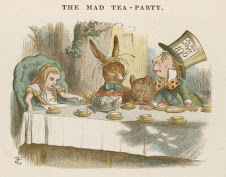The authors see some of the most outspoken advocacy in favor of IRV as part of a larger strategy geared toward the implementation of proportional representation:Opinions vary as to the relative merits of TTR versus other systems, and the above is not meant as an endorsement of TTR per se. Rather, it is a testament to the extent to which the voting method determines the party composition of a government. It seems clear that if we want to escape the two-party stranglehold, we must adopt a different voting method; specifically one which is not known to also maintain two-party domination.
Many of the modern efforts for voting reform promote an alternative form of runoff, called instant runoff voting (“IRV”), which allows voters to rank the candidates and appears to offer us a way out of our electoral difficulties. Unfortunately, communities and scholars are discovering that the hope IRV offers us for escaping our two-party system is only illusory.
Like TTR, IRV doesn’t fix the spoiler problem: a bloc of voters may get a worse result by supporting their sincere favorite candidate.
FairVote, the organization most often associated with the push for IRV, was founded in 1992 as “Citizens for Proportional Representation” (and later the “Center for Voting and Democracy”), and it seems that behind the scenes, their pursuit of IRV is a long-term play for proportional representation in America.The piece concludes, as promised in the title, with an appeal for support of score voting, or a simplified variant thereof, namely, approval voting:The stepping stone strategy might actually make sense were it not for the USA’s rigid impediments to proportional representation, which was made illegal at the federal level via a 1967 law which outlawed multi-member districts. In 1996, congresswoman Cynthia McKinney (who later ran as the Green Party candidate for US President) wrote, but failed to pass, bill HR 2545, which would have overridden that previous 1967 law. She re-introduced a similar bill, HR 1189, in 2001. It failed again. Then she tried again with HR 2690 in 2005. It failed yet again.
This leads us to believe that PR will be federally unobtainable in the USA as long as we are two-party dominated (a Congress dominated by two parties will continue to block anti-duopoly legislation such as McKinney’s). We therefore believe that proponents of PR must find a single-winner voting method which doesn’t maintain duopoly, as a prerequisite to PR.
In his 2008 book Gaming the Vote, author William Poundstone (an MIT physics grad) suggests a voting method called range voting (a.k.a. score voting), in which voters rate the candidates on a scale such as 0-10 or 1-5. When the scale is reduced to 0-1, we effectively have approval voting, which is identical to plurality voting except that there is no limit on the number of candidates a voter may support. . . .On a related, but tangential, note, a reader recently sent me a link to the Proportional Representation Party. From their "about" page:
Score voting has historically been overlooked, based on the assumption that it would succumb to pervasive tactical exaggeration. But that view was debunked back in 2000, when a Princeton math Ph.D. named Warren D. Smith performed an extensive set of computer calculations which showed the system working extremely well, even with high rates of tactical voting. . . . In election theory parlance, we say that score voting passes the Favorite Betrayal Criterion. . . .A simple way to think of it is that a tactical score voter should support the same candidate as he would with a plurality ballot, and then also support all the candidates he likes better. This means that the appearance of being “unelectable” need not become a self-fulfilling prophecy, like with plurality, IRV, and so many other methods. If it turns out that enough voters prefer a minor party or independent candidate to the presumed frontrunners, then he can actually win, even if the voters are highly tactical! Empirical evidence strongly suggests election outcomes will then be vastly more representative of the actual relative support for the candidates.
We believe this has enormous consequences, beyond the obvious opportunity to escape from two-party domination.
Proportional Representation IS modern democracy. The PR Party is an organization founded in 2007 to promote the concepts of proportional representation in New York and the entire US. Most modern democracies in the world today use some form of PR to elect their local and national legislatures and we in this country ought to be doing the same. The time has come to replace the old fashioned two-party-winner-take-all politics that characterizes US politics, and PR provides a modern all-inclusive method of doing it.







1 comment:
We'd expect that more of M2 supporters would also come to prefer m>M1 and so the effects of strategic voting would be less bad.
But yeah IRV doesn't change the fact there is two main parties. However, the claim that such would happen for AV or SV has yet to be empirically verified.
My view is that any single-member election leads to there being two dominant parties and the best way to change that is to use multi-member elections in more local elections, like state-house of representatives and municipal elections.
This is where American Proportional Representation comes in handy. The problem with PR use in the US is that there are too many varieties and open-list versions are too hard to explain, while closed-list versions go against how USAmericans like to vote for candidates, not party lists. AmPR circumvents this problem and would be a better stepping-stone than IRV3 as advocated by FairVote.
dlw
Post a Comment